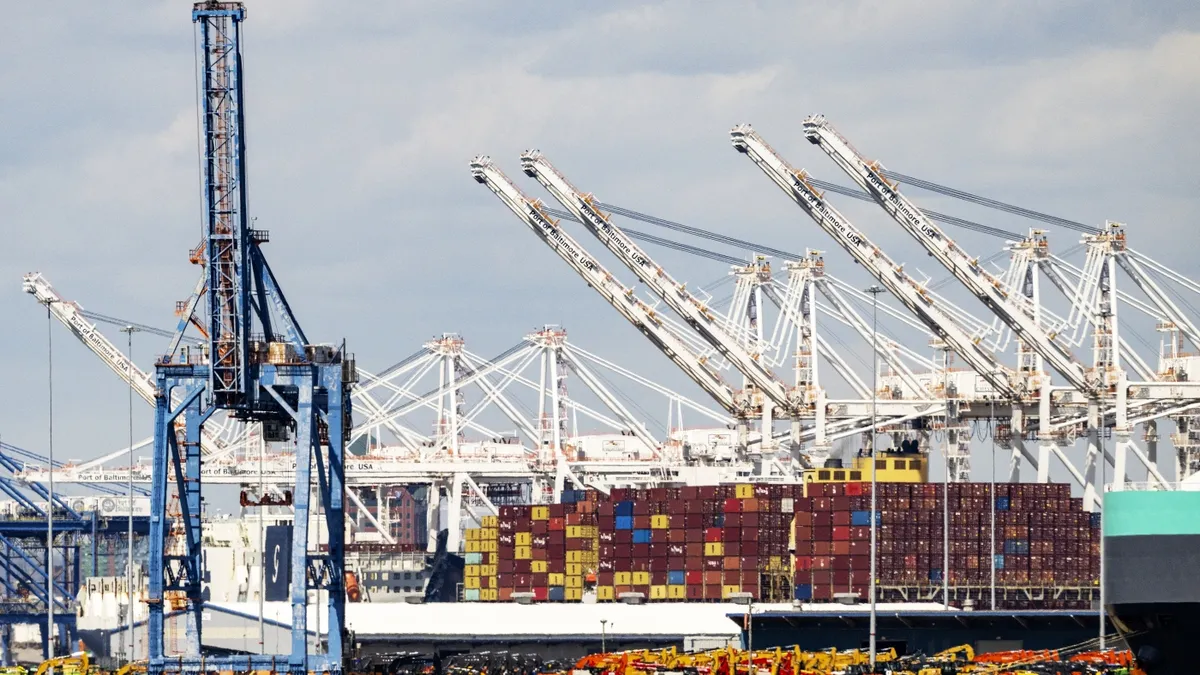
Many American small-business owners have been experiencing a rollercoaster of emotions driven by tariffs: from worry and confusion to anxiety and frustration. However, this week, a new wave of emotions has emerged. “I feel a lot of relief and hope,” says Sarah Wells, the owner of a Virginia-based company that specializes in selling breast-pump backpacks and other maternity accessories. In March, Wells faced a daunting challenge, needing to find an extra $15,000 to secure her shipment from China, which was already en route to the U.S. when the White House first imposed tariffs. With two federal courts now ruling that President Trump overstepped his authority in ordering these tariffs, Wells, like many of her peers, is left pondering a pressing question: Will they get that money back? Yet, as the White House pledges to appeal the ruling, another thought looms: Is this just another twist in the ongoing tariff saga?
Barton O'Brien, the founder of BAYDOG, prepared for the impending tariffs by stockpiling every available space with leashes, harnesses, and other pet supplies destined for hundreds of stores. “We had dog life jackets in the bathroom,” recalls O'Brien, a former Marine running his business from Kent Island, Maryland. His warehouse was overflowing, leading him to rent additional storage. Watching other businesses sue the Trump administration over tariffs, O'Brien had to cancel some of his own orders for doggie sweaters. He had anticipated double-digit tariffs on China, but did not foresee tariffs affecting shipments from suppliers in India and Vietnam. The looming 26% tax on imports from India threatened to wipe out his profit margins, compelling O'Brien to rethink his inventory strategy for the upcoming fall season. “The production cycle is very long. You need to plan six to eight months out,” he states. “We don’t know what the tariff regime will look like, but we have to get products made and hope for a favorable decision.”
On a significant note, late Wednesday, the U.S. Court of International Trade struck down many of Trump's tariffs, ruling in favor of 12 states and five businesses. However, the following day, a U.S. appeals court temporarily halted that judgment pending further legal proceedings. Additionally, on Thursday, another federal court blocked Trump’s authority to impose tariffs unilaterally, siding with two Illinois toy importers. The White House has vowed to appeal, defending its actions under the International Economic Emergency Powers Act (IEEPA). “We expect to fight this battle all the way to the Supreme Court,” stated spokeswoman Karoline Leavitt. Meanwhile, businesses find themselves in a state of uncertainty, hesitant to make additional orders or shipments, and unsure about where to establish factories or how to adjust prices.
Rozalynn Goodwin from South Carolina, who produces patented double-snap hair barrettes known as GaBBY Bows, finds herself at a crossroads. Her company had secured a lucrative deal to supply GaBBY Bows to hundreds of Claire’s stores. However, at one point, tariffs on her products surged to over 170%. Following a mid-May agreement by the White House to temporarily roll back tariffs on Chinese goods, Goodwin's tariff rates dropped to about 35%—still a substantial burden for her business. “When you're selling a product for $3.99, every cent counts,” she emphasizes. Goodwin has had to renegotiate her deal with Claire’s, opting to begin with existing stock rather than introducing new designs and colors. Although she is exploring U.S.-based manufacturers, the prices remain prohibitively high. “I am hopeful that by the fall, cooler heads will prevail, and we can reach a resolution,” she adds. “I will make what I have work until I can’t anymore.”
Even if the recent court rulings uphold and abolish Trump's tariffs under the emergency law, the White House retains other legal avenues to impose import taxes. These could be more restrained than the sweeping tariffs challenged in this week’s rulings. For instance, Section 232 of the Trade Expansion Act empowers the president to impose tariffs based on national security concerns, while Section 301 of the 1974 Trade Act permits tariffs to penalize trade violations. Trump has previously leveraged both powers to impose tariffs on steel, aluminum imports, and Chinese goods.
To counterbalance some of their tariff-related costs, many business owners, including Sarah Wells of Sarah Wells Bags, have raised prices by 10% to 15%. This trend is not isolated; for instance, the cosmetics company e.l.f. recently announced a $1 price increase on all its products due to tariffs. “I have just been squeezed from all ends,” Wells explains, noting increases in shipping costs, packaging expenses, and shipping labels. Last month, when tariffs on goods from China peaked at 145%, importers hurried to store cargo in bonded U.S. warehouses to avoid levies temporarily. Once the 90-day truce reduced those tariffs to 30%, businesses rushed to retrieve their goods from storage, incurring additional shipping costs. While Wells has identified a new manufacturer in Cambodia as a backup for China, she acknowledges that those shipments will take time and likely won’t arrive until early 2026. Thus, she is closely monitoring the tariff lawsuits to determine if she can resume orders from her Chinese suppliers.
“Until we gain a bit more clarity, the unfortunate reality is that companies are unlikely to make significant moves—whether it’s reshoring to the U.S. or shifting away from China,” says Marc Busch, a trade law expert at Georgetown University. “No one knows what could change next, and that uncertainty is the crux of the problem today.”